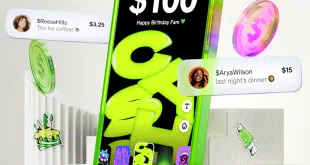If you’re not, and you’re a retailer with physical stores, you should be. But there’s a way to fight back. Proprietary mobile apps show the way.
Amazon.com Inc. is on a tear. Reports show the online retailer accounted for 24 cents of every $1 in retail sales growth in 2015, and is driving 60% of e-commerce growth. In 2017, Amazon is expected to supplant Macy’s as the number-one seller of clothes in the U.S.—with its apparel sales rising 10 times faster than the industry’s as a whole.
Retailers are in a panic. And for good reason. Neither Amazon’s growth, nor brick-and-mortar retailers’ sagging sales and profits, have shown any signs of slowing. The retail landscape has shifted, and physical retailers must shift, too, or risk losing their loyal customer base to online retailers that are serving them better.
So, what’s Amazon doing right? A lot. For starters, it’s using personalization really well. Amazon welcomes shoppers by name, shows them previous purchases, recommends items to pair with those purchases, offers buyer reviews, and provides bundled offers, custom discounts, and dynamic pricing curated to that shopper.
Amazon also makes buying really easy. It offers one-click checkout and easy, fast shipping, then wraps it all up with a digital receipt. The online retailer has perfected the art of delivering convenience and value through a personalized, frictionless shopping experience.
Emulate the Amazon Experience
Physical retailers can emulate Amazon by embracing digital commerce to augment the brick-and-mortar shopping experience. Physical retailers have a hugely important asset in their stores: Consumers still want to touch and feel many products before making a purchase.
It’s imperative that retailers make good use of the in-store experience. To do so, they must dynamically interact with shoppers on their mobile device, inviting them into a relationship that is experiential and rewarding and provides continuous value. The best way to do this is through the retailer’s own store-branded mobile app.
This app must provide the type of convenience and value that will incentivize shoppers to use it. Shoppers already use their smart phones at retail to compare prices, get product information, and to get or use coupons. If a retailer doesn’t offer its own mobile app that does these things effectively, the consumer will seek alternative apps to help them do their shopping.
A good retailer mobile app should provide relevant and contextual help based on the type of products the consumer is looking for, his personal preferences, his past experience with the retailer, and the type of discount and offers (coupons) available to him. It should also help the shopper choose the right product at the right price, as well as make it easier for shoppers to redeem their loyalty points, rewards, and offers at the time of checkout.
Retailers must create multiple in-app utilities for consumers to use all the way through the shopping process, enabling shoppers to earn loyalty points, use offers, and get concierge help to find or decide on a product. Ultimately, retailers must deliver a price equal to or better than customers can get anywhere else, and then allow easy reward and loyalty redemption and payment through mobile.
Throughout the process, consumers should feel in control. They make their checkout decisions through their mobile device using the retailer app, deciding how many loyalty points to use, which offers and rewards to redeem at checkout, and what payment option to use to obtain the greatest savings. The checkout experience should deliver instant gratification, showing the customer how much he saved, and building on the customer loyalty and relationship.
Build on Loyalty
Typically, loyal customers are willing to try out a retailer’s mobile app, and, presuming it’s done right, this app can drive many benefits to the retailer. By purposefully building an ongoing relationship with customers, physical retailers can earn increased customer loyalty, more traffic to stores, higher conversion rates and average ticket values, reduced retailer operational costs, and increased business. All this without hemorrhaging customers to the competition, be it Amazon or someone else.
A great example of a retailer that has done the mobile app right is Starbucks Corp. In the early days, the retailer started with a basic payment app that would also add loyalty points. It made the app an extension of its gift card program, which, in the case of the app, became a reloadable gift card.
As payment technologies evolved, Starbucks allowed for in-app payments and top-ups, removing friction from that process. The retailer also ensured that the app was accepted as a form of payment at all of its stores and that the baristas were trained to accept it.
As an added bonus, Starbucks included a simple way to earn and redeem reward points through the branded app every time the consumer used it. The higher the loyalty, the more benefits the consumer got. Starbucks was able to get 10% to 15% penetration with this app version.
Starbucks then went beyond the initial convenience features to add incrementally more value to the app. This included the capability to order ahead, which took the hassle of standing in line out of the mix and caused usage to increase to 25% of all physical-store transactions. The retailer offered the full store menu and customizations as part of the order-ahead feature, which made the app even more useful and actually increased loyalty to the brand.
Consumers feel it’s easier to buy at Starbucks versus at competing stores, so they vote with their wallet, purchasing their coffee from the retailer that knows them best and provides meaningful services that offer convenience and value.
What’s a Retailer To Do?
The ball is in the retailer’s court. Here is how to use a retailer-branded app to level the playing field, score points with shoppers, and maintain and grow a loyal fan base:
Engage customers
– With the number of associates in stores shrinking, a well-designed retail app can act as a concierge, enabling customers to obtain information on, or find the location of, various store products.
– When visiting physical stores, customers want an engaging experience. Gamification makes shopping fun and entices return visits.
Personalize the Experience
– Deliver the right product, the right price, and enough information for an informed decision.
– Increase not only the number of shoppers who buy, but get them to buy more by delivering deals to create higher ticket value, and exposing deals based on what a shopper is already purchasing.
– Customers are leaving “traces” every time they purchase, scan research, or look up an item. Leverage these traces to better understand shopper behavior and deliver relevant deals and product recommendations.
– Deliver real-time offers that are most contextual and relevant to consumers based on who they are, where they are, and what they are interested in at that moment. This can be done at time of check-in or during the shopping experience. Or it could be a time-sensitive offer at the end of a transaction to bring the consumer back to the store within two weeks or a month.
Reward loyalty
– Treat loyal customers as VIPs, surprising and delighting them with loyalty discounts and rewards. This might include:
– a custom offer for a product that the shopper has shown interest in, but has yet to purchase;
– a surprise reward based on increased loyalty;
– an unexpected higher percentage discount on total purchase;
– an unsolicited product suggestion, based on personal preferences.
– Make loyalty, rewards, and offer programs easier for customers to participate in and simpler to redeem, especially at checkout, enabling shoppers to “feel” the savings and get the instant gratification of being a loyal customer.
Offer more choices, less inventory
– The app enables retailers to carry more item types, but less physical inventory.
– With the retailer mobile app, consumers can shop in-store, scan with their phone, and have the product shipped to their home. This is seamless, helps consumers avoid lines, and ensures the sale is not lost.
– Consumers can make a broader set of purchases, and retailers can cross-sell, by leveraging visits to their physical store.
– Data from the mobile app helps retailers make better merchandising decisions, knowing which items, sizes and colors should be carried in-store, and which can be warehoused.
Provide a frictionless multichannel experience
– With the mobile app, whether in-store, in a virtual aisle, at self-checkout, or online, the shopper benefits from a seamless, consistent checkout, integrated rewards and loyalty experience and personalized service.
– Payment through the mobile app offers a higher level of security, reducing fraud risk.
Will Shoppers Adopt Your App?
The adoption question is top-of-mind for most retailers. The answer is a resounding YES, if the app offers value and convenience, while including an element of delight.
Consumers need to feel that they can gain a lot more by using the app than doing things the way they have always done. As an example, Uber is an app that allows people to hail rides. A few years ago, most people were equally comfortable hailing a cab, but there were issues with that process: finding a cab, making sure the taxi will go where you want to go, ensuring the fare is clear and well defined, and making sure the company accepts a form of payment that you want to use.
Uber hit on all those aspects with the convenience of its app and was successful in changing consumer behavior in a matter of a few years, to the extent that frequent taxi users are more comfortable with Uber than regular taxis now. In fact, Uber is so successful that its main competition is becoming other ride-hailing services, rather than taxis themselves. The same can happen in brick-and-mortar retail if proper attention is given to the digitization of in-store retail.
The Bottom Line
The retailer mobile app is not optional. Without a high-utility store-branded app, consumers will continue to turn to third-party apps like Amazon to meet their shopping needs.
This is a slippery slope for retailers, for as they lose ground due to lack of services and support for smart-phone-toting consumers, they will also lose loyal customers who are being better served by other online or brick-and-mortar retailers.
To retain loyalty, physical retailers cannot let the consumer experience be dominated by third-party apps. If a retailer serves the customer better, shoppers will go where the store knows them, where they can buy the right products at the right price, and where they can have fun while doing so.
In short, the retailer mobile app becomes a survival tool for brand retailers to start growing their physical-store business instead of losing it to pure online retailers or traditional, but more digital-savvy, competitors.
—Mohammad Khan is president and co?founder of OmnyPay Inc., San Francisco.





